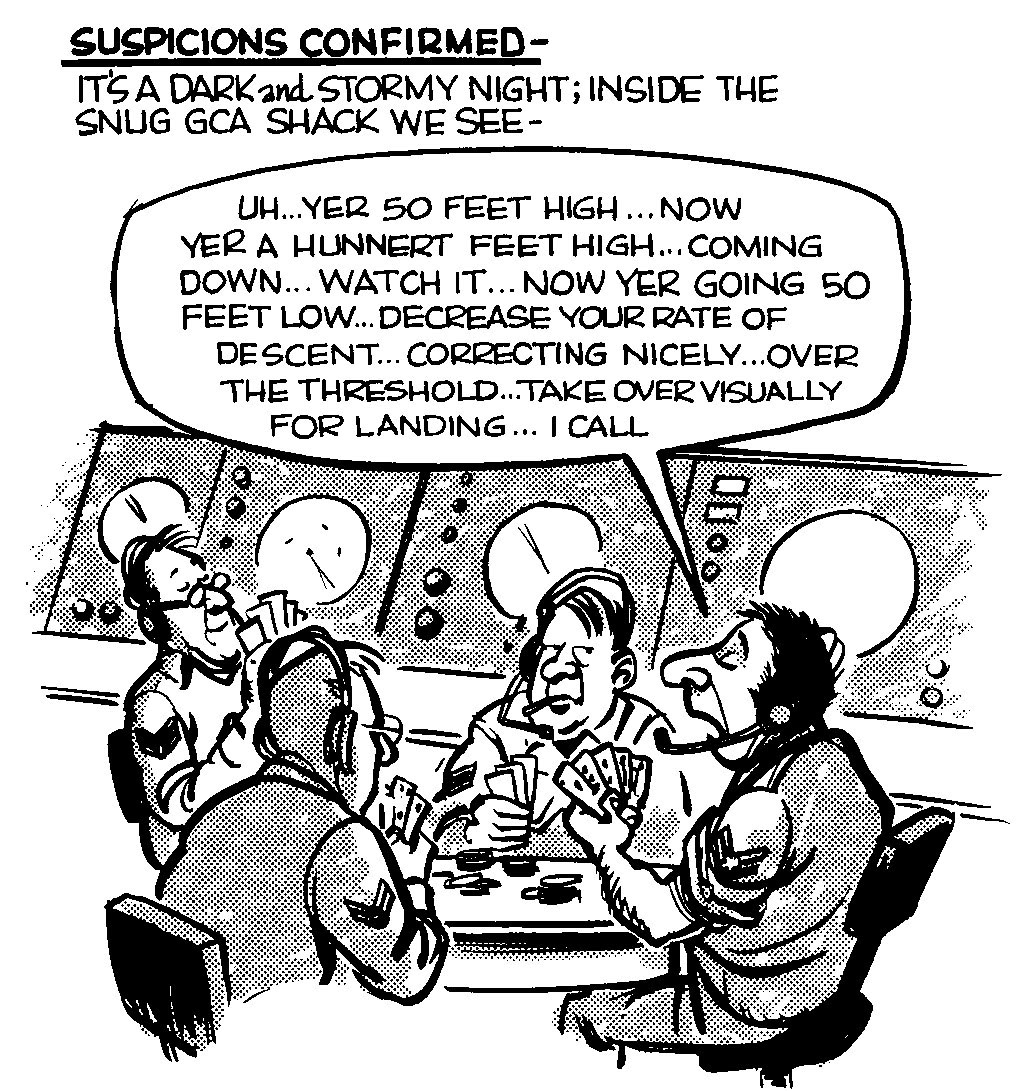You may never need to do one of these; I haven't done one in almost twenty years. But if you do, here you go.
— James Albright

Updated:
2011-11-02

1
General description
A SURVEILLANCE APPROACH (ASR) is one in which a controller provides navigational guidance in azimuth only. The pilot is furnished headings to fly to align the aircraft with the extended centerline of the landing runway. Since the radar information used for a surveillance approach is considerably less precise than that used for a precision approach, the accuracy of the approach will not be as great and higher minimums will apply. Guidance in elevation is not possible but the pilot will be advised when to commence descent to the Minimum Descent Altitude (MDA) or, if appropriate, to an intermediate step-down fix Minimum Crossing Altitude and subsequently to the prescribed MDA. In addition, the pilot will be advised of the location of the Missed Approach Point (MAP) prescribed for the procedure and the aircraft's position each mile on final from the runway, airport or heliport or MAP, as appropriate. If requested by the pilot, recommended altitudes will be issued at each mile, based on the descent gradient established for the procedure, down to the last mile that is at or above the MDA. Normally, navigational guidance will be provided until the aircraft reaches the MAP. Controllers will terminate guidance and instruct the pilot to execute a missed approach unless at the MAP the pilot has the runway, airport or heliport in sight or, for a helicopter point-in-space approach, the prescribed visual reference with the surface is established. Also, if, at any time during the approach the controller considers that safe guidance for the remainder of the approach cannot be provided, the controller will terminate guidance and instruct the pilot to execute a missed approach. Similarly, guidance termination and missed approach will be effected upon pilot request and, for civil aircraft only, controllers may terminate guidance when the pilot reports the runway, airport/heliport or visual surface route (point-in-space approach) in sight or otherwise indicates that continued guidance is not required. Radar service is automatically terminated at the completion of a radar approach.
Source: Aeronautical Information Manual ¶ 5-4-11
2
Equipment requirements
The radar approach is predicated entirely upon voice instructions from the radar controller.
Source: AFM 51-37, ¶ 6-17.b.
3
Regulatory requirements
None.
Your operator, aircraft manufacturer, or your company may require specific training to accomplish this type of approach. I recommend trying in the simulator with someone who has done it before.
4
Advantages
Requires nothing more than a radio.
5
Disadvantages
The ASR is very inaccurate and requires a high degree of training from the radar controller and pilot. Very few facilities in the world still offer ASR approaches.
6
Limitations
None.
7
Procedures
Repeat all headings, altitudes (departing and assigned), and altimeter settings until the final controller advises "do not acknowledge further transmissions."
Source: AFM 51-37, ¶ 6-17.b.
- The transition to final segment of the approach includes all maneuvering up to a point where the aircraft is inbound and approximately 8 nautical miles from touchdown. Turns and descents should be initiated immediately after instructed.
- Perform turns by establishing an angle of bank on the attitude indicator which will approximate a standard turn for the TAS flown but do not exceed 30° of bank.
Source: AFM 51-37, ¶ 6-17.c.
- When the aircraft reaches the descent point, the controller will advise you to descend to MDA.
- Arrive at the MDA with enough time and distance remaining to identify the runway environment and descend from MDA to touchdown at a rate normally used for a visual approach for your aircraft.
- The controller will issue course guidance when required and range information each mile on final approach.
- Fly the aircraft at the MDA until arrival at the missed approach point or until establishing visual contact with the runway.
Source: AFM 51-37, ¶ 6-17.d.
References
(Source material)
Aeronautical Information Manual
Air Force Manual (AFM) 51-37, Instrument Flying, 1 December 1976
Stevens, Bob, "There I was . . ." 25 Years, TAB Books, 1992, The Village Press
